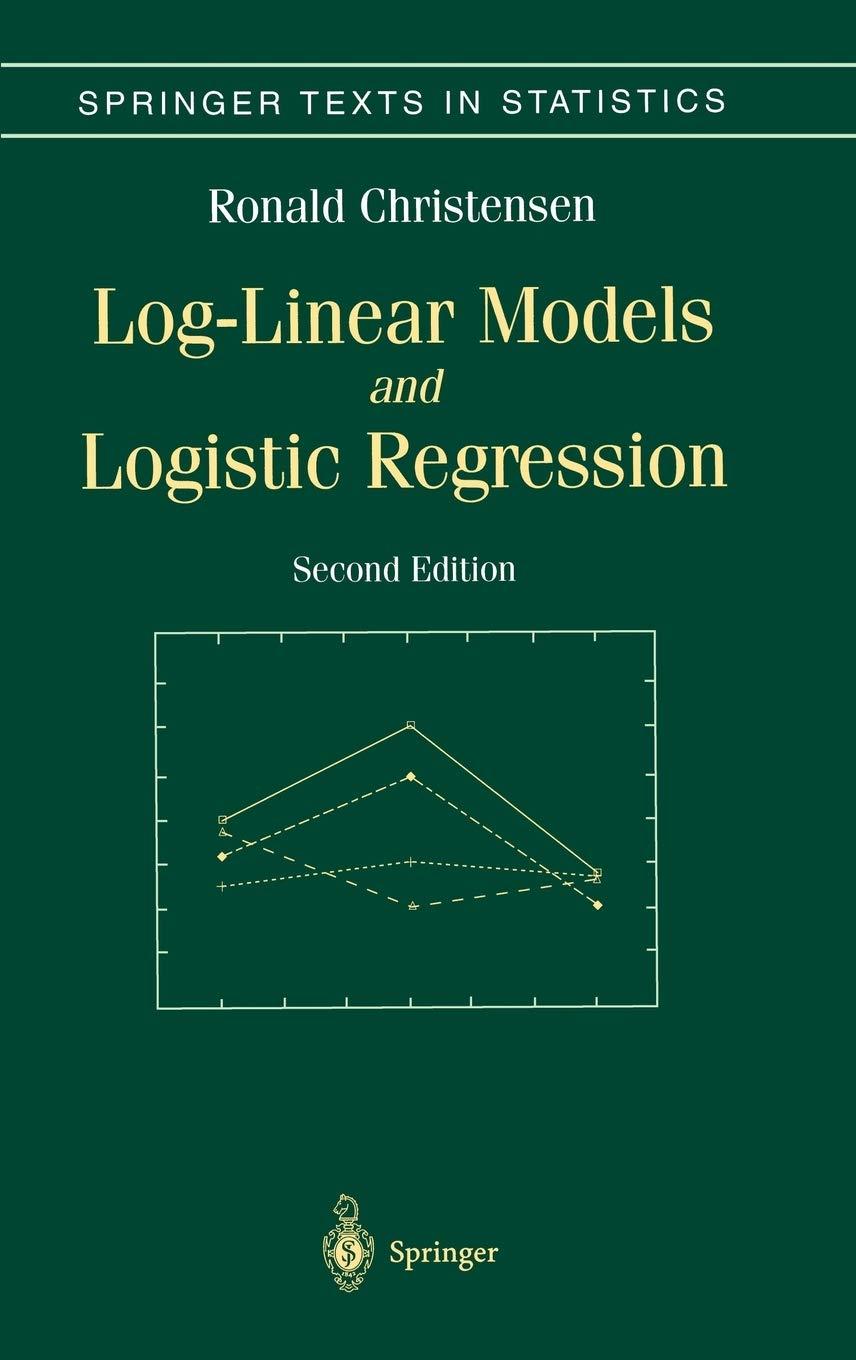Partitioning Tables. The examination of odds ratios and residuals provide two ways to investigate lack of independence
Question:
Partitioning Tables.
The examination of odds ratios and residuals provide two ways to investigate lack of independence in a two-way table. The partitioning methods of Irwin (1949) and Lancaster (1949) provide another. Christensen (1996a, Section 8.6) gives extensive examples of the application of these methods.
Table 2.7 gives data on the occupation of family heads for families of various religious groups. The occupations are A – Professions, B – Owners, Managers, and Officials, C – Clerical and Sales, D – Skilled, E – Semiskilled, F –
Unskilled,G–Farmers, H – No Occupation. The data were extracted from Lazerwitz (1961). Although the data were collected using a complex sampling design (cf. Section 3.5), ignore this fact in your analysis. To establish the effect of the Protestant groups on the lack of independence, we can isolate the Protestant groups in a separate reduced table. We can also pool the Protestants together in a collapsed table that includes the non-Protestant groups. These are both given in Table 2.8. Test each of the three tables for independence. Note that G2 for the full table equals the sum of the G2’s for the reduced table and the collapsed table. Continue the analysis of these data by using the partitioning procedure on the reduced and collapsed tables and on subsequent generations of reduced and collapsed tables. Note that tables can also be partitioned on their columns. At its logical extreme, this leads to a collection of 2×2 tables, each with one degree of freedom for testing independence. The Lancaster-Irwin partitioning provides a method of breaking the interaction (lack of independence) G2 for the full table into one degree of freedom components that add up to the original G2. This is similar to using orthogonal contrasts to break up the interaction sum of squares in a balanced analysis of variance. For a theoretical justification of the Lancaster-Irwin procedure, see Exercise 8.4.3.
TABLE 2.7. Occupation and Religion Religion A B C D E F G H White Baptist 43 78 64 135 135 57 86 114 Black Baptist 9 2 9 23 47 77 18 41 Methodist 73 80 80 117 102 58 66 153 Lutheran 23 36 43 59 46 26 49 46 Presbyterian 35 54 38 46 19 22 11 46 Episcopalian 27 27 20 14 7 5 2 15 Roman Catholic 102 140 127 279 254 127 51 190 Jewish 36 60 30 17 17 2 0 26 No Religion 19 12 6 12 25 9 14 28
Step by Step Answer:

Log Linear Models And Logistic Regression
ISBN: 9780387982472
2nd Edition
Authors: Ronald Christensen






